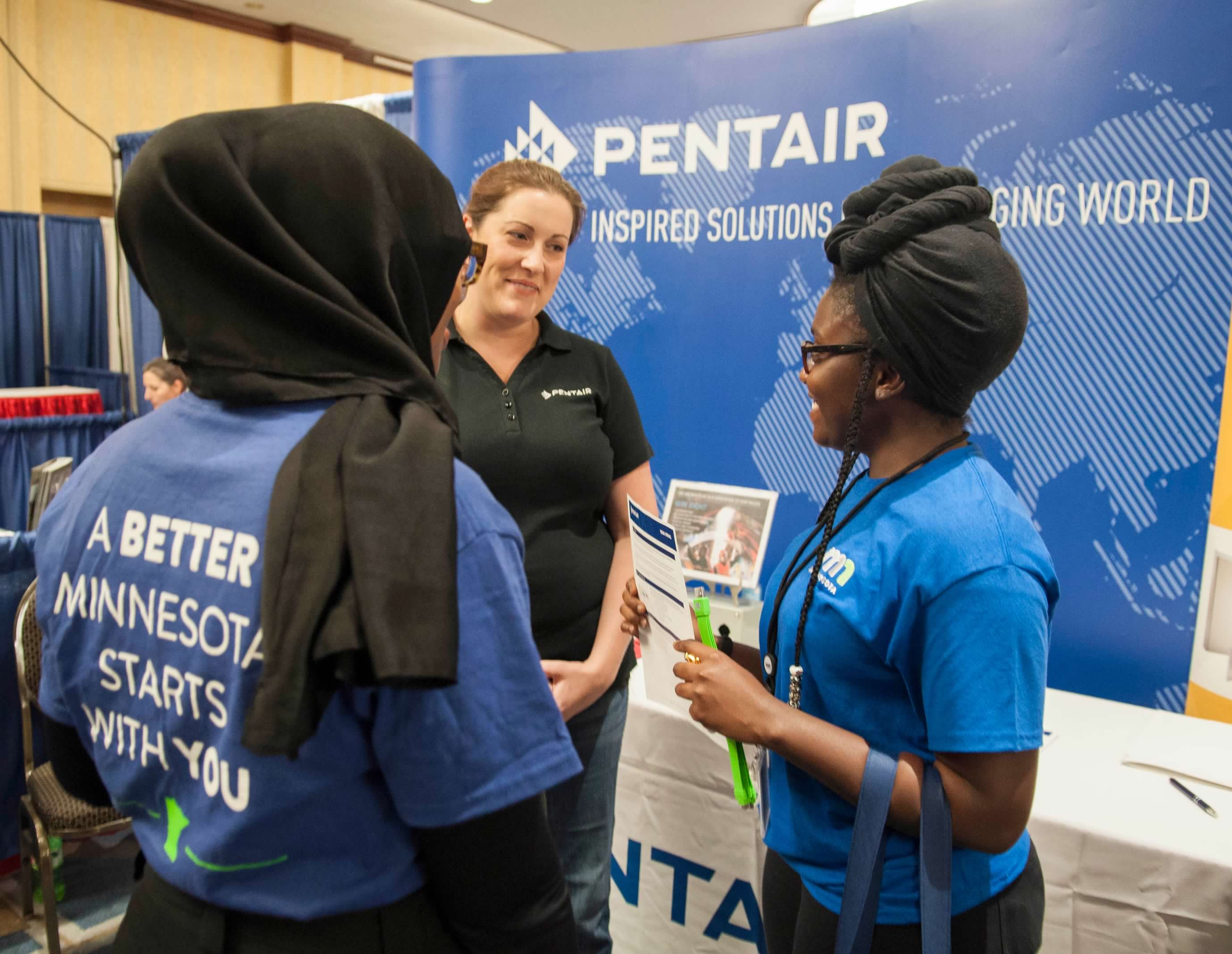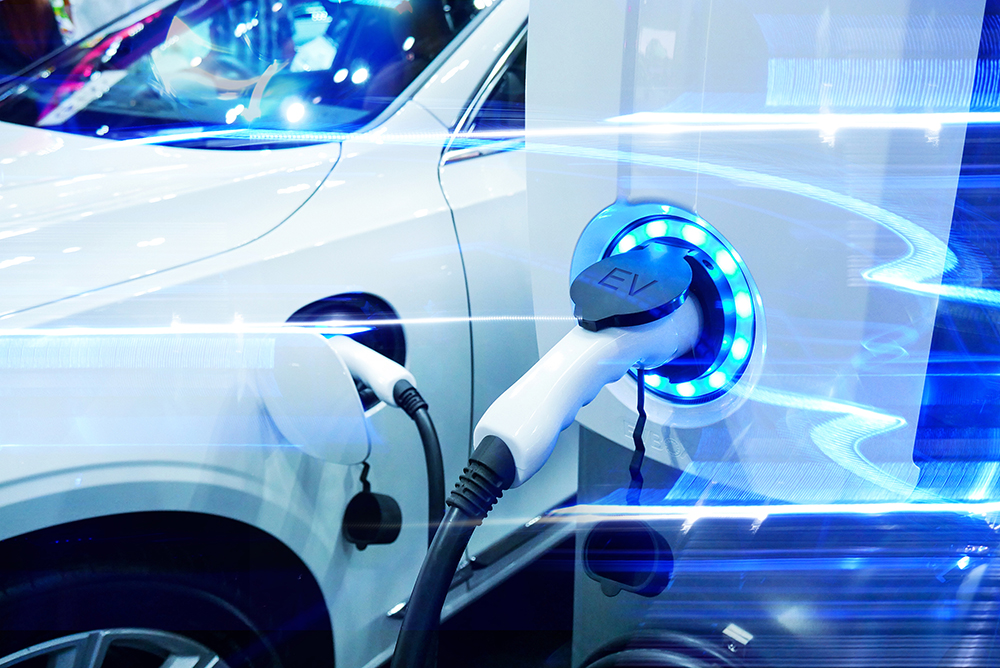Clean Tech & Renewable Energy
Sustainability for our planet isn't a buzz word. It's serious business.
 Minnesota is committed to developing, building and promoting sustainable solutions across a swath of industries – including water, solar, wind and other clean energy technologies. Our state has long been a leader in biofuels, and carbon emissions from Minnesota's power sector have declined 40 percent in the last ten years as our state transitions to a cleaner energy future. Additionally, the state has a robust smart mobility infrastructure and industry leaders pioneering new technologies in sustainable transportation methods.
Minnesota is committed to developing, building and promoting sustainable solutions across a swath of industries – including water, solar, wind and other clean energy technologies. Our state has long been a leader in biofuels, and carbon emissions from Minnesota's power sector have declined 40 percent in the last ten years as our state transitions to a cleaner energy future. Additionally, the state has a robust smart mobility infrastructure and industry leaders pioneering new technologies in sustainable transportation methods.
Minnesota's Clean Tech and Renewable Energy Ecosystem
Minnesota has a robust ecosystem of established companies, vibrant startups, leading research centers, government support and cross-sector partnerships.
- Minnesota ranks 1st in the West-North-Central Region and 5th in the nation in sustainability.
- We rank as the 7th most environmentally friendly state, according to WalletHub.
- The American Council for an Energy-Efficient Economy (ACEEE) ranked Minnesota 9th for its overall energy efficiency programs (the highest ranking in the Midwest).
- Minnesota's major and Fortune 500 companies are undertaking notable sustainability efforts. 3M, Cargill, Ecolab, Target and General Mills have all signed agreements to power their wind or solar energy operations from projects representing over 1 gigawatt of capacity.
Renewable Energy
- According to American Clean Power, Minnesota produces nearly 5,794 MW of electricity from clean energy, ranking 8th nationwide.
- Minnesota's clean energy can power 1.9 million homes in the state.
- Minnesota was the first state to mandate use of biodiesel, establishing a B2 mandate in 2005 and we were the first state to mandate use of ethanol in gasoline in 1995.
- Minnesota's 19 ethanol plants have an annual production capacity of 1.4B gallons, ranking 5th by volume in the country.
Industry Leaders
Minnesota’s CleanTech ecosystem boasts both homegrown companies and investments from firms across the country and internationally.
- Xcel Energy, the largest utility provider in the state, became the first energy company in the nation to announce a vision to provide 100% carbon-free electricity by 2050 across the eight states it serves.
- As part of its commitment to clean energy leadership, Xcel Energy is taking big steps in developing and implementing electric vehicle programs to increase electric vehicles on the road.
- The company offers numerous incentive programs to connect consumers with renewable energy and purchase energy from consumers with renewable systems and they oversee the nation's largest community solar program.
- The company's Renewable Development Fund has committed more than $118M to date in funding for projects and research labs like the Center for Microgrid Research at the University of St. Thomas in Minnesota.
 Great River Energy, an electric cooperative, is partnering with Form Energy on a long-duration battery pilot project, in Cambridge, Minn.
Great River Energy, an electric cooperative, is partnering with Form Energy on a long-duration battery pilot project, in Cambridge, Minn.- SageGlass, based in Faribault, Minn., manufactures "smart" glass that adjusts to outside brightness and increases energy efficiency.
- Heliene: Solar panel manufacturer based in Ontario with major factory in Mountain Iron, Minn.
- NextEra Energy: Based in Florida with wind, solar and battery storage projects in Minnesota.
- Avangrid Renewables: Based in Portland Oregon with wind energy projects in SW Minnesota.
Statewide Commitment to Clean Energy
- One Minnesota Path to Clean Energy includes the goal of 100% clean energy generation for utilities by 2050.
- Governor's Council on Biofuels was created to advise the Governor, and the Commissioners of the Department of Agriculture, the Department of Transportation, the Department of Commerce, and the Pollution Control Agency on the role of biofuels in reducing greenhouse gas emissions, and recommend policy and budget proposals to foster growth in the production and use of biofuels.
- Conservation Applied Research and Development program at the Minnesota Department of Commerce funds projects to identify new energy-saving technologies, improve effectiveness of existing energy conservation programs, and document carbon dioxide reductions
- The Minnesota Department of Employment and Economic Development has a newly created Energy Transition Office to help communities and workers impacted by power plant closures, as well as a Community Energy Transition Grant program, which awarded $1.94M in 2021 to 5 communities
Academic and Research Institutions
Minnesota's academic and research institutions are on the leading edge of many new clean energy innovations. They also understand the importance of translating discoveries into useable techniques and products.
- The University of Minnesota (U of M) ranked 9th in R&D expenditures among public universities in the U.S. in FY2019. Total R&D expenditures were $1.013 billion for the Twin Cities campus.
- The U of M has several clean and renewable labs and facilities on its campuses:
- Natural Resources Research Institute at U of M Duluth features a Renewable Energy Lab.
- Institute on the Environment
- Solar Energy Lab
- Venture Center: Since 2006, has launched more than 170 startups companies based on U of M technology and helped them raise more than $405 million. 22 of these startups have been focused on energy and the environment.
- U of M Extension Extension Regional Sustainable Development Partnership (RSDP) connect Greater Minnesota communities to the U of M to support local sustainability projects. Focus on ag and food systems; clean energy; natural resources and resilient communities.
- The Department of Bioproducts and Biosystems Engineering works for the sustainable use of renewable resources. Areas of research include renewable energy, environmental management and sustainable systems; biomass conversion and utilization; and bioengineering, biotechnology and bioprocessing among other fields.
- In addition to the University of Minnesota, the entire Minnesota State University System also has a strong clean tech and renewable focus, including the Minnesota State Energy Center of Excellence and the Center for Renewable Energy Research at Minnesota State University – Mankato.
- The University of St. Thomas in the Twin Cities Center for Microgrid Research is a resource to help power companies transition to carbon free electricity.
Incubators and Accelerators
Minnesota is committed to nurturing the next generation of entrepreneurs and technologies through a wide range of programs and services:
- Launch Minnesota, an award-winning initiative developed through the Minnesota Department of Employment and Economic Development, serves as an entry point for innovators and startups. It offers innovation grants and helps startups access capital and connect with resources, expertise and training.
- MN Cup, the largest statewide venture competition in the country, has offered an Energy/CleanTech/WaterTech division since 2009.
- Cleantech Open Midwest was founded in 2010 as the Midwest division of the Cleantech Open network. It is headquartered at the University of St. Thomas Schulze School of Entrepreneurship in Minnesota, covers 13 states, and to date has helped 90 startups that have gone on to raise over $20 million.
- Grid Catalyst is a new Minnesota accelerator explicitly focused on clean energy solutions for northern climates.
- The new Minnesota Efficient Technology Accelerator will support energy-efficient and innovating technologies.
- Agricultural Utilization Research Institute research facilities include a Biobased Products Laboratory in Marshall.
Smart Mobility
 When it comes to electric vehicles, our market and manufacturing capacity are growing. Minnesota companies are developing the technologies, products and services needed to transition to electric and autonomous vehicles and other equipment. This includes technologies related to battery and sensor efficiency, charging stations, assembly line automation, software and IoT control systems, safety and cybersecurity, and the manufacturing of electric vehicles.
When it comes to electric vehicles, our market and manufacturing capacity are growing. Minnesota companies are developing the technologies, products and services needed to transition to electric and autonomous vehicles and other equipment. This includes technologies related to battery and sensor efficiency, charging stations, assembly line automation, software and IoT control systems, safety and cybersecurity, and the manufacturing of electric vehicles.
- As of June 2021, there were 10,380 electric vehicles registered in Minnesota (U.S. Department of Energy).
- 555 public charging stations and 1,284 EVSE charging outlets (U.S. Department of Energy).
- 12,160 jobs in EV related industries (EMSI).
The State's Commitment to Smart Mobility
- The Minnesota Pollution Control Agency just completed a round of grants to help fund the purchase and installation of dual-port electric vehicle (EV) Level 2 charging stations in public places and workplace locations.
- The agency is also in the process of adopting a rule that would require auto manufacturers to deliver more vehicles with zero tailpipe emissions, like EVs, for sale in the state, increasing each year.
- The Minnesota Department of Transportation (MnDOT) established the goal of reducing GHG emissions 80% below 2005 levels by 2050, compared to a 2005 baseline. This means that the state is committed to supporting the production of electric vehicles and their components.
- "Accelerating Electric Vehicle Adoption: A Vision for Minnesota" (the Vision) from MnDOT is the first coordinated attempt to outline a statewide vision for increasing EV use. The Vision describes strategies for achieving the goal of powering 20% of light-duty cars in the state with electricity by 2030.
- MnDOT created the Sustainable Transportation Advisory Council in 2020 to advise the agency and provide recommendations for transitioning to a low-carbon transportation system.
Minnesota's Global Smart Mobility Impact
Minnesota's central location, sharing an international border with Canada, allows the state to have one of the largest export markets and remain a globally connected region.
- The state exported $2.1 billion in smart mobility components (electrical, electronic and vehicle) in 2021, up 36% since 2020.
- The state ranked 11th in exports of smart mobility components among states.
